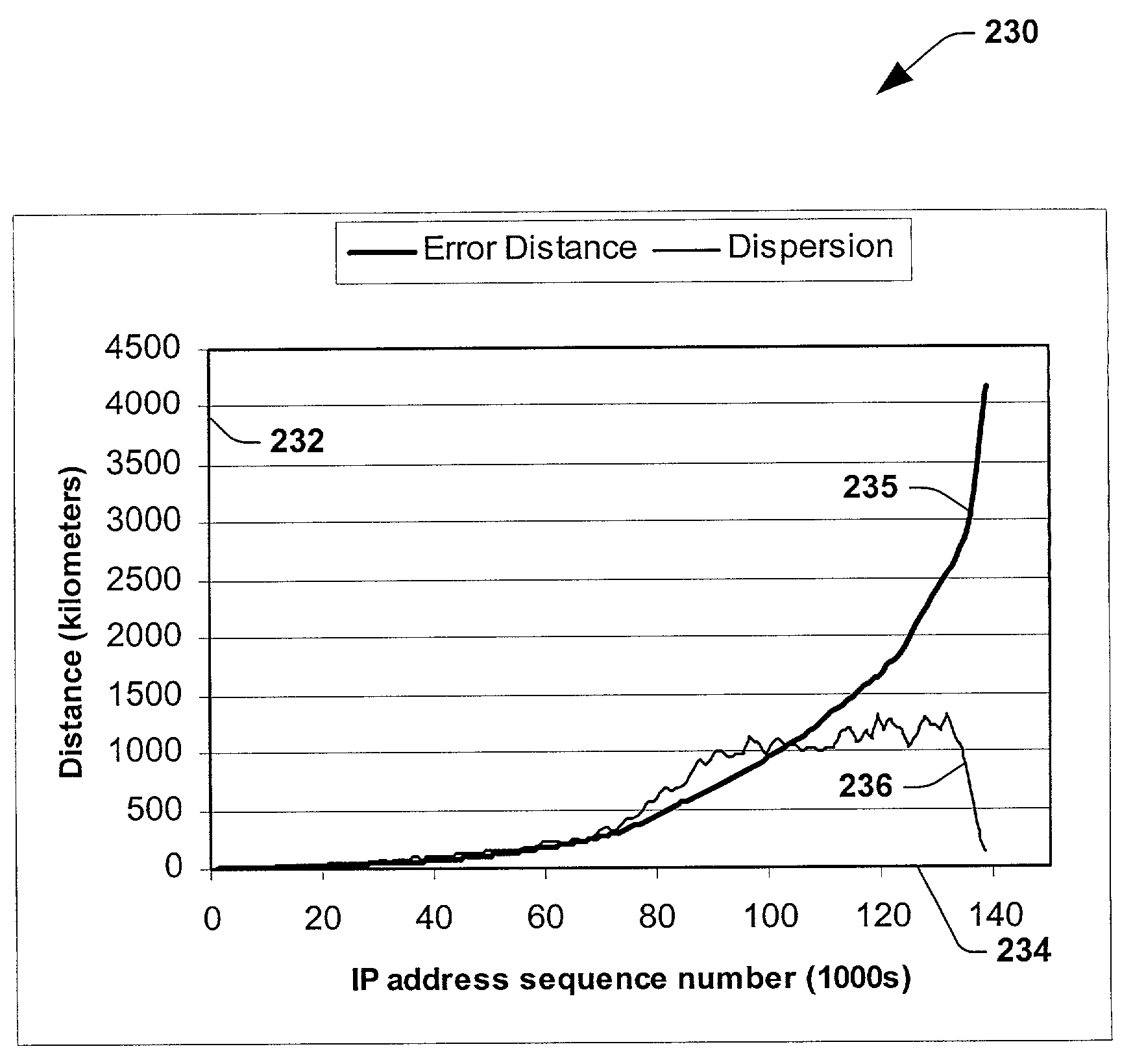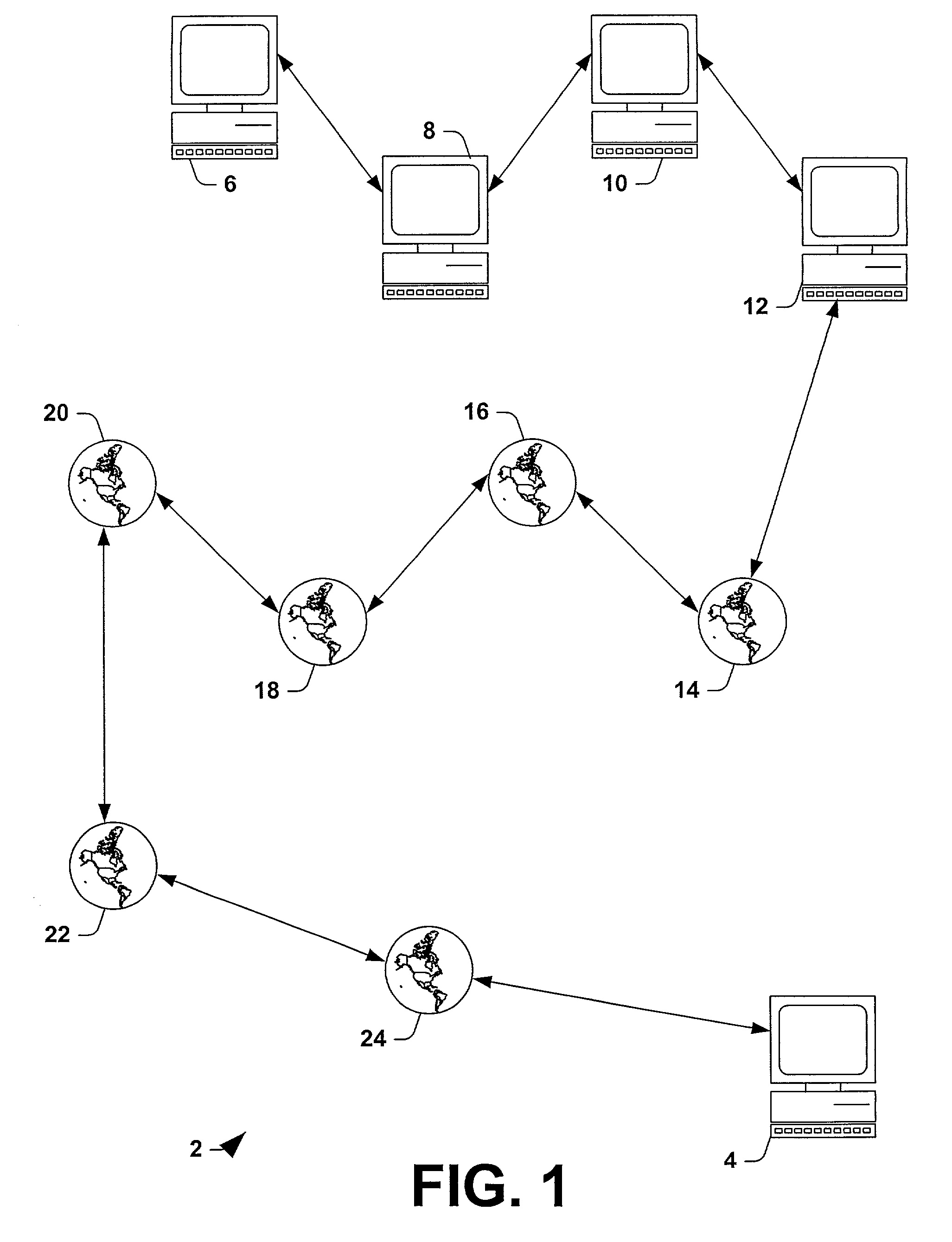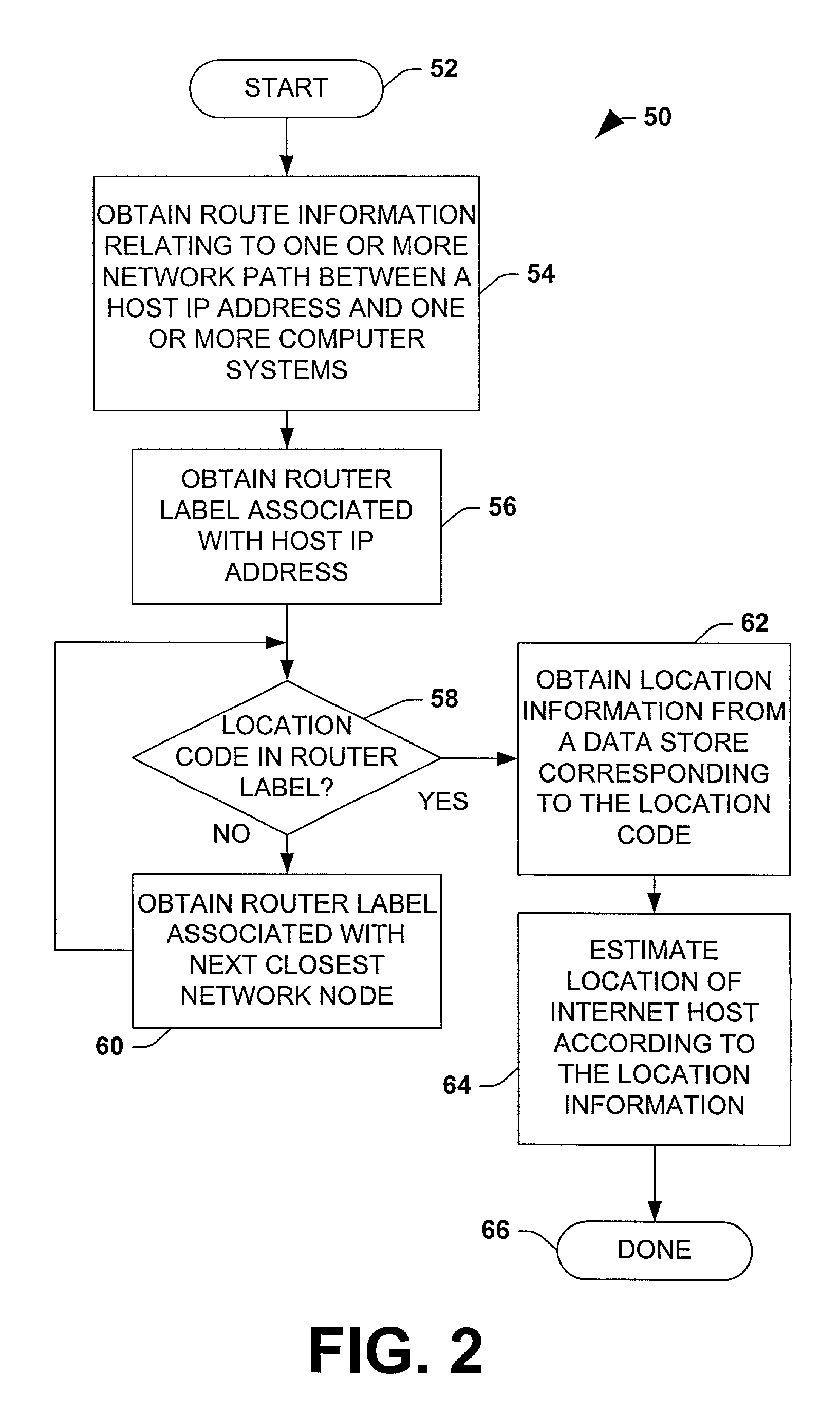System and method for determining the geographic location of internet hosts
a technology of internet hosts and geographic locations, applied in the field of computer systems, can solve the problems of inability to provide the geographic resolution required, inability to apply signal strength measurement techniques employed in wireless systems to the internet, and general inability to achieve the same progress in conventional tools and techniques for locating internet hosts. to prevent or minimize the provision of incorrect location-specific content or services
- Summary
- Abstract
- Description
- Claims
- Application Information
AI Technical Summary
Benefits of technology
Problems solved by technology
Method used
Image
Examples
Embodiment Construction
[0043]The present invention is now described with reference to the drawings, wherein like reference numerals are used to refer to like elements throughout. In the following description, for purposes of explanation, numerous specific details are set forth in order to provide a thorough understanding of the present invention. It may be evident, however, to one skilled in the art that the present invention may be practiced without these specific details. Moreover, well-known structures and devices are illustrated in some instances in block diagram form in order to facilitate description of the present invention.
[0044]The invention provides systems and methodologies for determining the geographic location of an Internet host. A first method infers host location based on the DNS names of the host of interest or other nearby network nodes. A second method employs network delay measurements from geographically distributed locations to triangulate the coordinates of the host. A third method...
PUM
 Login to View More
Login to View More Abstract
Description
Claims
Application Information
 Login to View More
Login to View More - R&D
- Intellectual Property
- Life Sciences
- Materials
- Tech Scout
- Unparalleled Data Quality
- Higher Quality Content
- 60% Fewer Hallucinations
Browse by: Latest US Patents, China's latest patents, Technical Efficacy Thesaurus, Application Domain, Technology Topic, Popular Technical Reports.
© 2025 PatSnap. All rights reserved.Legal|Privacy policy|Modern Slavery Act Transparency Statement|Sitemap|About US| Contact US: help@patsnap.com



